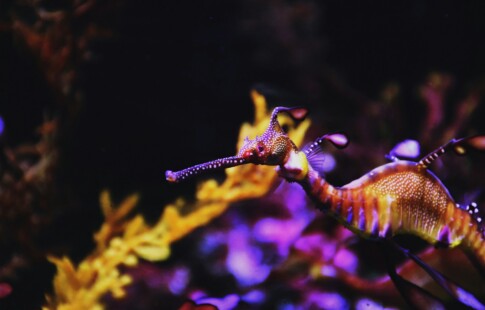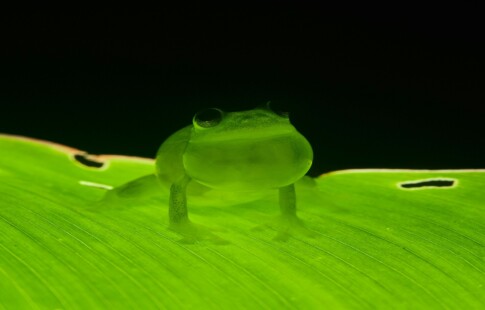
Your Guide to Using a Telescope for Bird Watching
We are reader-supported. When you buy through links on our site, we may earn affiliate commission.
Whether you’re an expert birder or complete beginner, bird watching is one of the most rewarding hobbies you can have. You probably already use binoculars to help you spot your favorite species, but did you know you can also use a telescope — also called a spotting scope — for bird watching? Here are a few tips to help you choose and use a telescope.
Why Use a Telescope for Bird Watching?
Telescopes offer a few advantages over binoculars, although these are still a staple among bird-watching enthusiasts. The benefits of using a telescope for bird watching include:
- Higher magnification: Binoculars usually offer magnifications of 8x or 10x. In contrast, telescopes will typically magnify your field of view between 15x and 60x.
- Greater customization: You can use different eyepieces in your telescope to accommodate your own vision needs.
- Sharing what you see: Since a telescope is mounted on a tripod, you can point it at a bird and show a friend exactly what you’re looking at. No more trying to guide someone’s hand on the binoculars!
- Photography: Use an adaptor to attach a DSLR camera to your telescope, effectively giving your camera a zoom lens.
- Ease of use: Holding binoculars up to your face can be challenging if your hands shake, you want to spend hours looking for birds or you have mobility issues. A telescope is stable, so all you have to do is look through the eyepiece.
When Binoculars Are Better
In some instances, binoculars are more useful than a telescope for bird watching. Their benefits include:
- A lower price tag: Even the cheapest telescopes run over $250, while it’s possible to score a pair of low-end binoculars for less than $50.
- A wider field of view: With two lenses, binoculars offer a wider field of view than telescopes, making them well-suited to scanning your surroundings for birds.
- Depth: Using both eyes allows you to view your subject with greater depth.
- Portability: Binoculars are smaller and more portable than telescopes. You can use them without a separate tripod mount.
Conclusion? Telescopes and binoculars each have great features that help you spot birds, so you might want to use both!
How to Choose a Telescope
First, it’s a good idea to ask yourself a few questions. What magnification do you want? How much is your budget? Additionally, how much do the telescope’s size and weight matter to you?
Bearing these points in mind, you can start to narrow your search. A great general-use telescope for birding is a compact 60-millimeter telescope that has a wide-angled 20x or 22x eyepiece. You can buy an additional 30x or 40x eyepiece for the telescope if you need higher magnification.
If you’ll be birding from a hide or in low-light conditions, 75-80-millimeter-aperture telescopes work well because they gather more light. The bigger the aperture, the more light the telescope can let it. Fixed 20x or 30x eyepieces are still a good choice, but you can also use a zoom lens.
Straight and Angled Telescopes
Another choice you need to make is whether you want a straight or angled telescope. Straight telescopes have an eyepiece that follows the light’s path from the objective lens. They’re typically easier to use when sitting in a hide, and they can make it easier to find what you’re looking for. Straight telescopes are usually the cheaper of the two options.
Angled telescopes have the eyepiece at a 45- or 90-degree angle relative to the body of the scope. This design makes it easier to track moving birds. Angled scopes are good for watching birds in treetops, helping you avoid straining your neck. They also work well for tall people who would otherwise have to bend down. With an angled scope, you don’t have to mount the tripod as high, which makes it more stable.
Whether straight or angled, both telescopes will give you a great view. It’s merely a matter of preference.
Magnifications
Most telescopes magnify your view between 15x to 60x, although some specialty scopes go even higher. You can buy a telescope with a zoom lens or interchangeable eyepieces to switch between magnifications. Telescopes with fixed lenses — which don’t allow you to switch between magnifications — usually offer 20x or 30x magnification. For long-distance viewing, a 40x lens will probably work well.
As magnification increases, field of view and image brightness both decrease. That means high-powered telescopes work best for looking at stationary objects, like nesting birds. If you want to watch active birds in the wee hours of the morning, choose a lower-magnification lens.
How to Set Up Your Spotting Scope
To set up your telescope and start birding, follow these steps:
- Unfold and set up your tripod.
- Attach the tripod plate to the telescope.
- Place the telescope on the tripod, using the plate to secure it.
- Remove the lens cover and eyepiece cover.
- Extend the eyecup if you aren’t wearing glasses.
- Starting at the lowest magnification, scan the horizon for birds.
- Focus on a stationary object around the distance you want to view.
- Once you find a bird, increase the magnification and refocus.
- Tighten the tripod head to keep the telescope secure.
Can You Use an Astronomical Telescope for Bird Watching?
If you use a telescope intended for astronomy to look at birds, you might notice something surprising — the birds will be flying the wrong way! They’ll either appear upside down, flipped along the vertical axis, or both. Astronomical telescopes don’t bother making an image appear correct, because that reduces their performance. As a result, they often turn the image the wrong way.
A spotting scope — the kind you use for bird watching — uses a set of prisms that flip the image so it looks correctly oriented. It won’t magnify your field of view as much as an astronomical telescope would, but it doesn’t need to. After all, the birds you’re observing aren’t light-years away!
In summary, choose a spotting telescope for bird watching and an astronomical telescope for stargazing. You’ll have a much better experience.
Take Your Bird Watching to the Next Level
A telescope is a great tool to add to your bird-watching setup. It allows you to see birds from a greater distance and with more stability than binoculars offer. Although telescopes are typically more expensive than binoculars, you can find low-end models for less than $300 to help you get started.
So, what are you waiting for? Get out there and watch some birds!
Share on
Like what you read? Join other Environment.co readers!
Get the latest updates on our planet by subscribing to the Environment.co newsletter!
About the author

Steve Russell
Steve is the Managing Editor of Environment.co and regularly contributes articles related to wildlife, biodiversity, and recycling. His passions include wildlife photography and bird watching.





